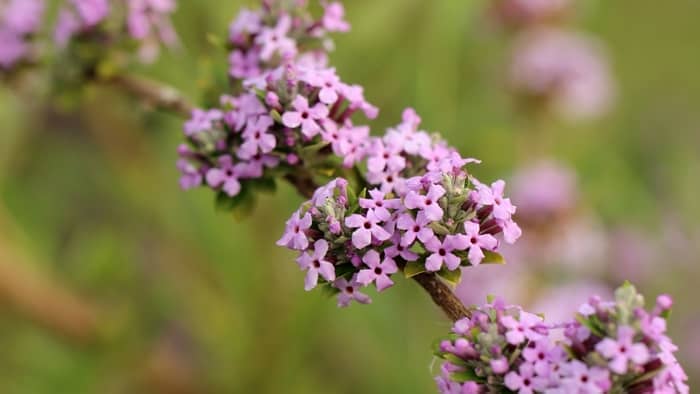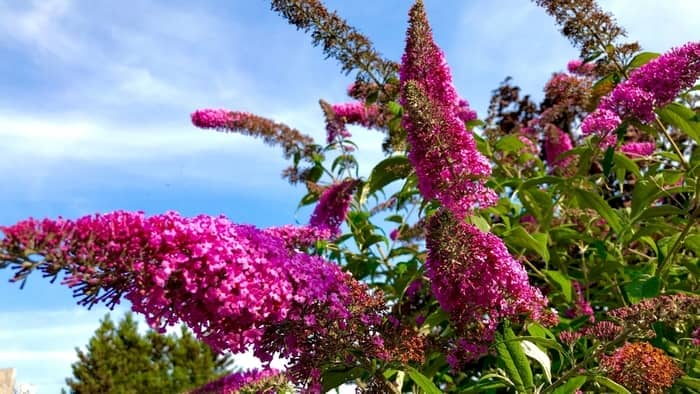The butterfly bush, also known as Buddleia davidii, grows with speed and doesn’t cost much to maintain. When to transplant butterfly bush is what we will be discussing here.
Summer is the time when they produce lovely flowers with a sweet fragrance that draws the attention of hummingbirds, butterflies, and bees. This shrub thrives well in partial or full sun.
This makes it easy to grow rapidly, for this reason, it’s normal to want to know when to transplant butterfly bush. Butterfly bushes are deciduous and easy plants that can stand the heat, drought, humidity, and poor soil. Also, they are known to be native to China and Japan.
They grow quickly, reaching as high as 10 or 15 feet. During mid-summer and fall, you will see cone-shaped flowers that appear in clusters on the stems of the butterfly bushes. These flowers are so lush and they come in shades of purple, blue, pink, yellow, white, and orange also.
Like it’s been said earlier on, it doesn’t cost much to maintain. Hence, to successfully know when and how to transplant butterfly bush only requires knowing a few things. We will list them here.
Transplanting Butterfly Bushes

Before you begin transplanting your butterfly bush, you ought to have prepared the new location where you’re transferring it to. Remember that butterfly bushes thrive well under partial to full sun.
Furthermore, the soil must be moist, well-drained. Before transplanting, also prepare the soil by amending it with compost. This will give you the best result. So before digging up the plant, wet the plant for a few days in order to moisten the soil.
Once the butterfly bush has been transplanted, you need not worry about giving your plant much care.
Now with ease, dig up the plant from where it is. Endeavor to dig up a large part of the root system as you can dig before pruning. You can dig as much as 3 ¼ of the drip line by a foot deep and of the width.
Everything should amount to a radius of 2 feet, going by the measurement from the stem. You can cut through extended roots using loppers. Go ahead and put a shovel at the base of the root ball, now you can lift the plant.
So, the objective is to have more than enough soil remaining on the root ball while moving the plant. Hence, make sure there’s a tarp close by.

Make sure the root ball is always covered and moist till it’s time for it to be replanted. When digging the hole for when and where to transplant butterfly bush, dig a hole that is wide and deep enough for the root. The hole should be two times the width of the root ball.
Then the root needs to be well balanced with the ground. Fill the hole around the root with the amended soil. Make sure there are no air pockets in the soil by tapping the soil gently.
Go ahead and start watering the plant consistently to make the roots take hold.
Once the root has been re-established, you can minimize watering the plant as the butterfly bush is drought tolerant. Now you can sit back and let your butterfly bush recuperate.
At this stage, be patient with your plant. Butterfly bush blooms late as it needs to shed off its withered flowers, leaves, and other deadheads. This is why pruning the plant is a good way of encouraging new growth.
When it’s winter and in its dormancy period, prune it back to the ground. Or you can as well wait till it’s early springtime.
Read more about Cheap Hummingbird Feeders
When To Transplant Butterfly Bush

The butterfly bush is a tough plant that can stand transplanting. The best time to transplant butterfly bush is during spring or fall. The best time is usually before the set time for the plant to spring forth in spring. And also after all its leaves must have withered during fall.
Furthermore, bear in mind that the best time for transplanting butterfly bush is also determined by the region where you live. Let’s take an example of a region with a cold climate. Spring is the most suitable time for transplanting. While in the southern region with a warmer climate, the best time for transplanting a butterfly bush is during fall.
Having butterfly bushes in the garden can bring about additional advantages as the plant helps to attract butterflies, as well as hummingbirds to the garden. And this really helps with pollination.
Apart from pruning and watering occasionally, butterfly bush doesn’t require much care. It can take care of itself well once it has been established.
Dividing Butterfly Bushes

Do you know it is possible to divide butterfly bushes? As long as the plants are healthy and big enough, it is possible. One of the ideal ways of propagating the butterfly bush plant is by dividing it.
Dividing butterfly bush can be done at any time of the year, so long as the plant itself is healthy. But for a lot of gardeners, a time when the soil is warmer than the air, which is during fall, seems to be the ideal time for dividing plants.
Dividing butterfly bush involves digging up the plant and then dividing its roots into two or more parts. These parts are then replanted. In order to hasten and make the division of butterfly bush a successful one, there are a few things that can be done to that effect.
Start by watering the soil surrounding the matured and healthy butterfly bush plants the night before the day you will be dividing them. This way, removing the plant with its roots won’t be stressful. Gently dig up each of the plants with the roots the next morning.
Afterward, start dividing the plants into several parts using your fingers or pruners. Make sure each divided parts of the butterfly bush have a few stems and roots. Then firstly, plant one of the several parts of the plant back in the spot where it was dug from.
Don’t waste time in planting the remaining pieces because if you hesitate to, the roots will dry out. Hence, go ahead and plant the other parts in the other prepared locations or pots.

Conclusion
If you find this article really helpful, you should go ahead and share it with other gardeners and friends. Do you know why? Some people till now don’t really know when to transplant butterfly bush. This will really come in handy for them.
FAQs
[rank_math_rich_snippet id=”s-2cded7c1-579c-4fad-a305-9aca0bfcf930″]

